Close up and personal with female artists at Fondation Beyeler
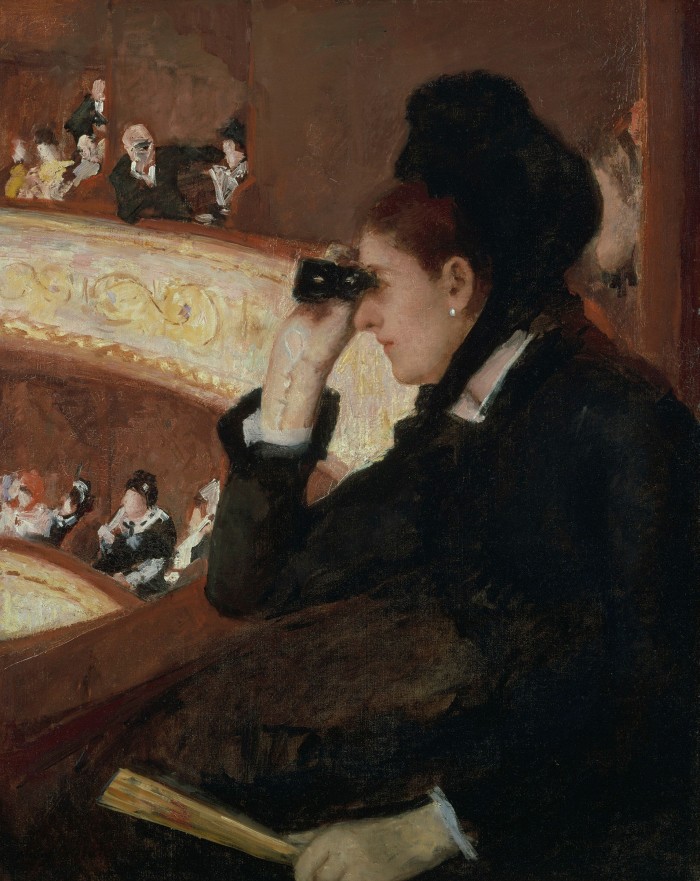
Roula Khalaf, Editor of the FT, selects her favourite stories in this weekly newsletter.
In Mary Cassatt’s 1878 painting “In the Loge”, the American artist captures the spectacle of looking in late 19th-century Paris through a complex web of gazes. As the viewer, we take in the side profile of a woman at the opera who peers through her glasses at an unseen audience member across from her. In the background, a man leans from his box in an effort to spy on the woman through his own opera glasses. The image is a scene of modern life, but it is also a portrait that captures the self-assuredness of the female spectator.
Cassatt’s opera-goer is one of several works by eight female painters and one photographer that play with the conventions of the portrait in a ravishing new exhibition, Close Up, at Basel’s Fondation Beyeler. Spanning from 1870 to the present, the show looks at parallel developments in western art that affected how we understand the human figure: the rise of the professional female artist and portraiture’s move away from its longstanding objective of accurately reproducing the likeness of the sitter.
By mapping a formidable lineage of women working with the figurative image — Cassatt, Berthe Morisot, Paula Modersohn-Becker, Lotte Laserstein, Frida Kahlo, Alice Neel, Marlene Dumas, Cindy Sherman and Elizabeth Peyton — the exhibition sheds light on how these artists contributed to the radical transformation of the genre.
Refreshingly, the exhibition resists imposing an all-encompassing “female gaze” on these women’s oeuvres by grouping their works through shared themes. Instead, each artist is allocated her own room to emphasise that they produced art in particular circumstances — as the varied treatment of the human figure throughout the show reveals.
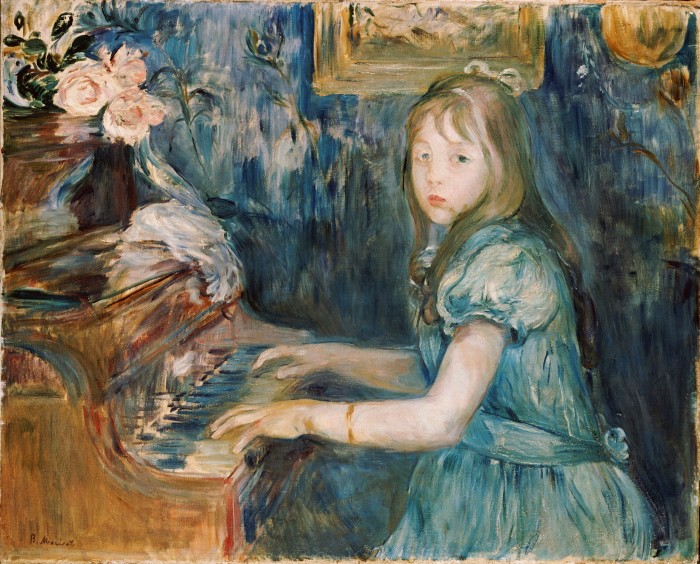
We begin in 1870s Paris, where propriety dictated that Cassatt and Morisot limit themselves to capturing mostly friends and family in domestic settings (Cassatt’s “In the Loge” is one of her few paintings of the public sphere). But this didn’t stop them from engaging with the formal experiments of their Impressionist circle. Morisot in particular injects dynamism into interior scenes through the speedy application of paint: the lively dark blue background rendered in quick brushstrokes contrasts with the white arms and face of the girl bored at music practice in “Lucie Léon at the Piano” (1892); the brisk detailing of the lace clothing and expressively raised eyebrows imbues the young woman lounging in her chair with a vibrant alertness in “Girl on a Divan” (1885).
Early on we also see modernist artists wresting the female figure from art history’s stereotypes. The German Modersohn-Becker, one of the first female artists to depict herself as a nude, rejects the eroticisation of her body in “Self-Portrait (Semi-Nude with Amber Necklace II)” (1906). She renders her naked form in simplified shapes with a darkly shaded, almost mask-like face confidently meeting our gaze, emulating what the artist described as the “masculine and bold” attitude of the modern woman.
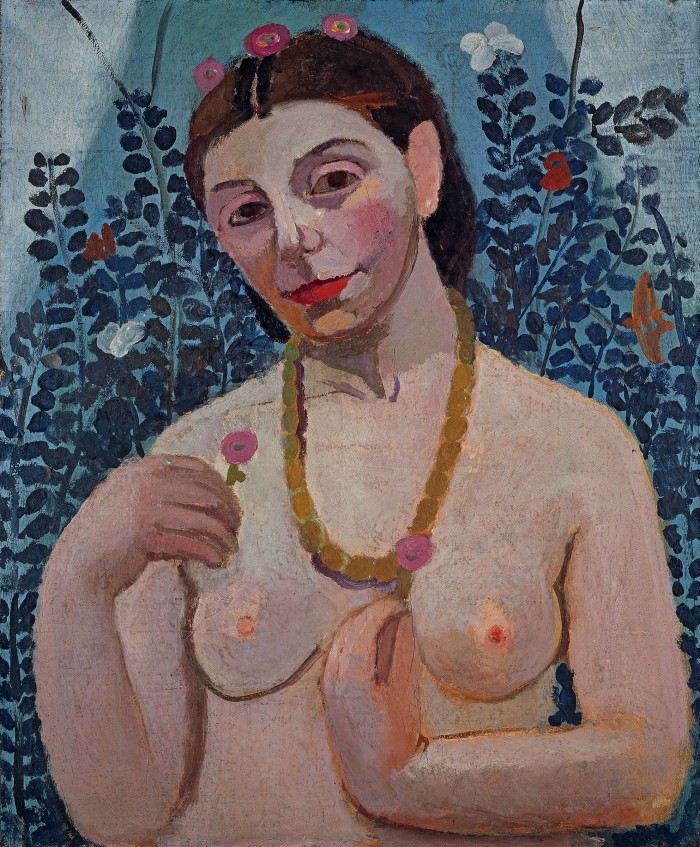
Working in 1920s Berlin, Laserstein similarly presents herself as an emancipated New Woman. She stakes a claim for a position in the art-historical canon with the remarkable work “In My Studio” (1928), which shows the artist at her easel, hair cropped and androgynous-looking, in deep concentration as she paints the nude model stretched out in front of her, whose radiant body rendered in a sensual realism recalls the paintings of Titian.
Neel’s penchant for painting elongated, fleshy forms produces what is perhaps the most confronting nude on display. In “Pregnant Woman” (1971), the American subverts the traditional odalisque pose by depicting her daughter-in-law lying naked on a sofa, weighed down by a heavy, distended stomach. The model’s frank expression conveys Neel’s view of pregnancy as “a basic fact of life” but is also a prime example of the intimacy that the artist created with her subjects as a chronicler of everyday New Yorkers.
Through this variety of the human form, the exhibition plots the dramatically changing view of the subject across this period. We witness definitions of “individuality”, once a vital trait of the portrait and particularly the self-portrait, shifting, splintering and at times rejected altogether as we move from modern era to the age of social media.
For Kahlo working in Mexico City from the 1920s to the 1950s, individuality meant a highly constructed persona in imagined settings. “Self-Portrait with Bonito” (1941), painted shortly after her father’s death, shows the artist posing against a rich jungle backdrop teeming with plants and insects, a scene which contrasts her black dress and sombre expression. It’s an image which speaks to the deep fascination that the artist held with the cycle of life and death throughout her career.
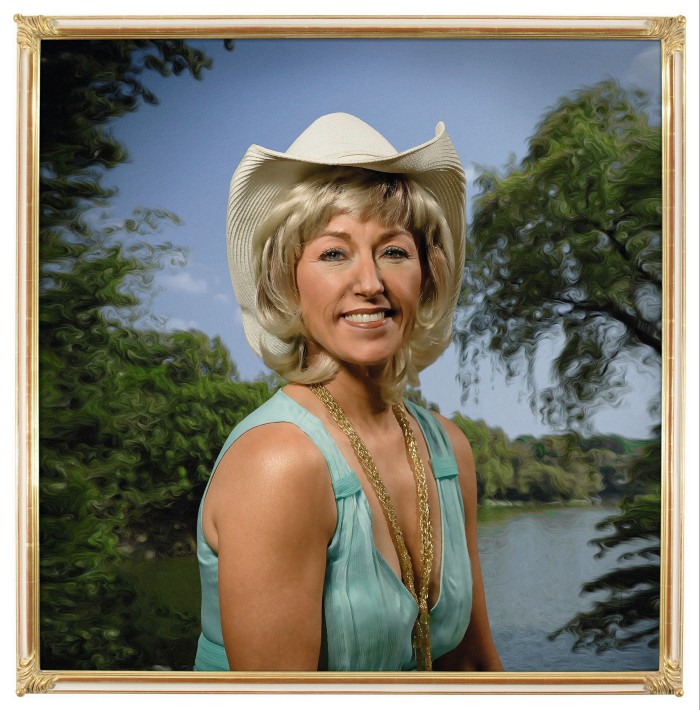
These symbolically charged self-portraits are hardly real but are no less authentic. Compare how different this constructed identity is from the photographs of Sherman, where the artist is buried in so many layers of disguise one could hardly label her works “self-portrait”. The concept of individuality is further muddied in the practice of the South Africa-born Dumas, who gleans her subjects from the media and delights in separating images from their origins. The artist’s intense, paint-smeared faces, often depicted close-up, with snarling mouths and wide eyes, are fully alienated from the newspaper photographs from which they are derived.
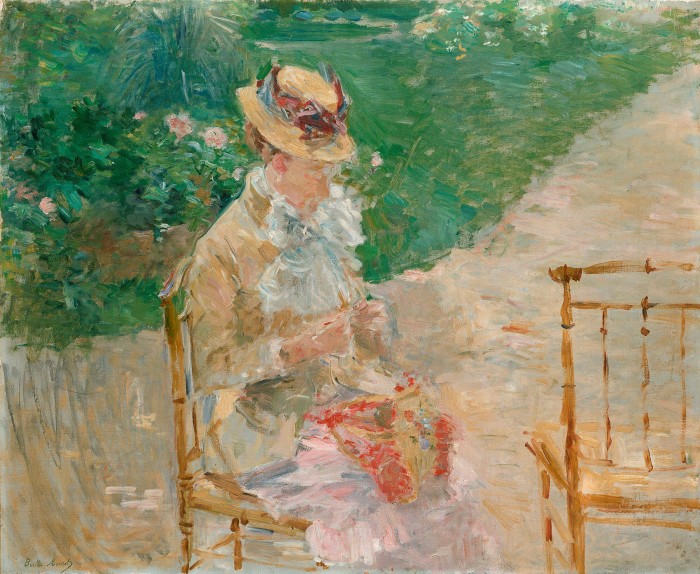
Arriving finally at Peyton’s small, jewel-like paintings, one can’t help but feel a sense of coming full circle. They possess a shared artistic language with earlier rooms: both her “Lara, Garden, Autumn” (2020) and Morisot’s “Young Woman Knitting” (c1883) depict a figure in the garden in colourful dappled brushstrokes, two self-determined women content in their dreamlike world. The young man rendered in deep indigo in “Nick (La Luncheonette December 2002)” (2003) shares a brooding, introspective quality with Dumas’ blue-hued portrait of the late singer Amy Winehouse (“Amy — Blue”, 2011). Here there is warmth and darkness, friends and strangers, studies of the individual but also the collective.
As critic Donatien Grau writes in his catalogue essay on Peyton: “A portrait does not have to be the image of an individuality, conceived as an island no one could access but the portraitist. A portrait can be the way to plunge into the sea of life.”
To January 2, fondationbeyeler.ch
Follow @ftweekend on Twitter to find out about our latest stories first
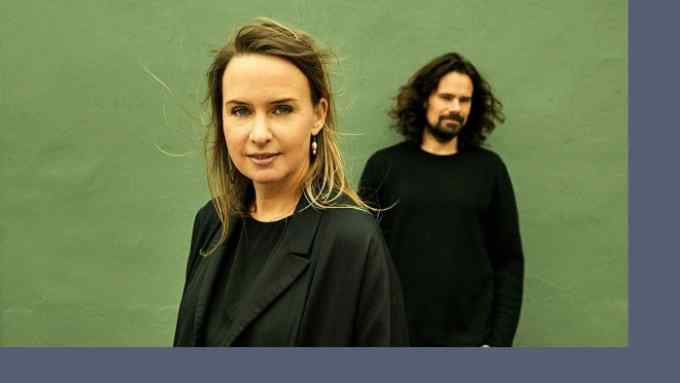
Comments